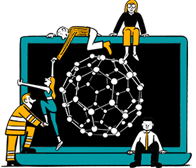
Down to zero for wipes
US nonwoven customers stocked up in advance with nonwoven fabric supplies, mainly from China.

7th August 2025
Innovation in Textiles
|
Lenzing, Austria & Helsinki, Finland
The negative impact of Donald Trump’s 2025 tariff regime on the nonwovens industry’s supply chain is becoming apparent from initial company financial reports issued for the first six months of the year.
Lenzing Group, for example, as a leading supplier of regenerated cellulosic fibres for nonwovens, as well as textiles, reports that the tariff measures and resulting uncertainty have led to considerable stress along the value chain and are now slowing the company’s recovery from troubled trading in 2024.
Nevertheless, the group managed to increase both revenue and earnings growth year-on-year in the first half of 2025.
Revenue was €1.34 billion, which was higher than in the same period of the previous year, and EBITDA climbed by 63.3% to €268.6 million, which included positive exceptional effects from the sale of surplus EU emission allowances amounting to €30.6 million.
“Lenzing made further progress on its path to operational recovery in the first half of 2025 and our performance programme is making a clear contribution to earnings improvement,” said CEO Rohit Aggarwal. “At the same time, we are seeing tangible effects from the growing uncertainties in international trade in the second quarter – particularly as a consequence of the aggressive tariffs policy. These developments not only affect our visibility, but also our earnings. For this reason, we are all the more determined to continue our measures to secure our turnaround in the long term and further strengthen our margins.”
Excess inventories
As a major manufacturer of nonwoven fabrics, Helsink-headquartered Suominen’s net sales meanwhile fell by 6% to €217.3 million from €232.3 million in the first six months of 2024. EBITDA was €7.3 million, down from €9.5 million in the same 2024 period.
“In the second quarter, we faced a lot of volatility in the market driven by the US tariff situation,” said Janne Silonsaari, CFO and interim president and CEO. “Ahead of the announced high tariffs towards China, US nonwoven customers stocked their inventories, mainly with supply from China.
“This led to excess inventories throughout the supply chain and impacted the demand negatively in the second quarter. Our second quarter sales of €99.8 million, were 15% lower than in the first quarter of 2025 and 16% lower than in the comparison period in 2024.”
In response, Suominen has now initiated a cost saving programme, leading to the loss of 60 jobs and also a reduction in the number of contractor roles.

Business intelligence for the fibre, textiles and apparel industries: technologies, innovations, markets, investments, trade policy, sourcing, strategy...
Find out more